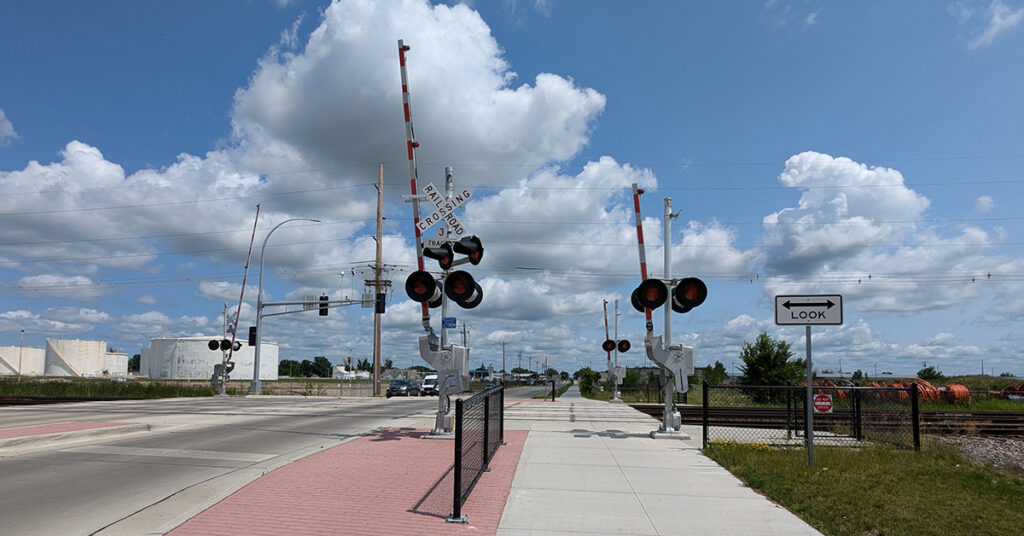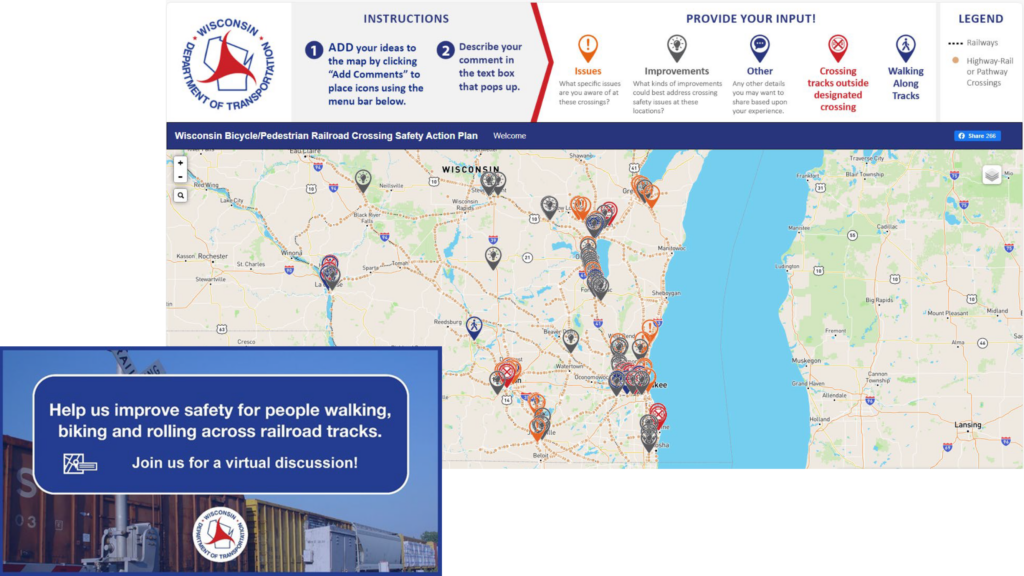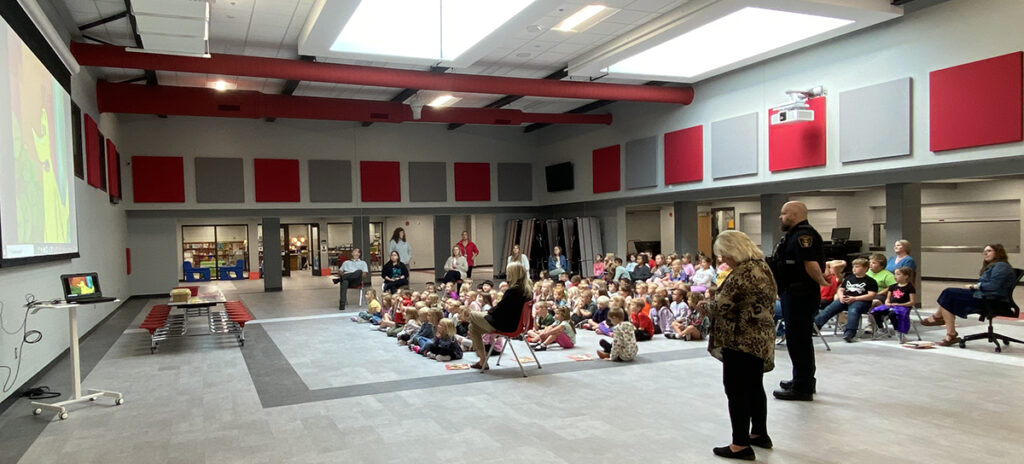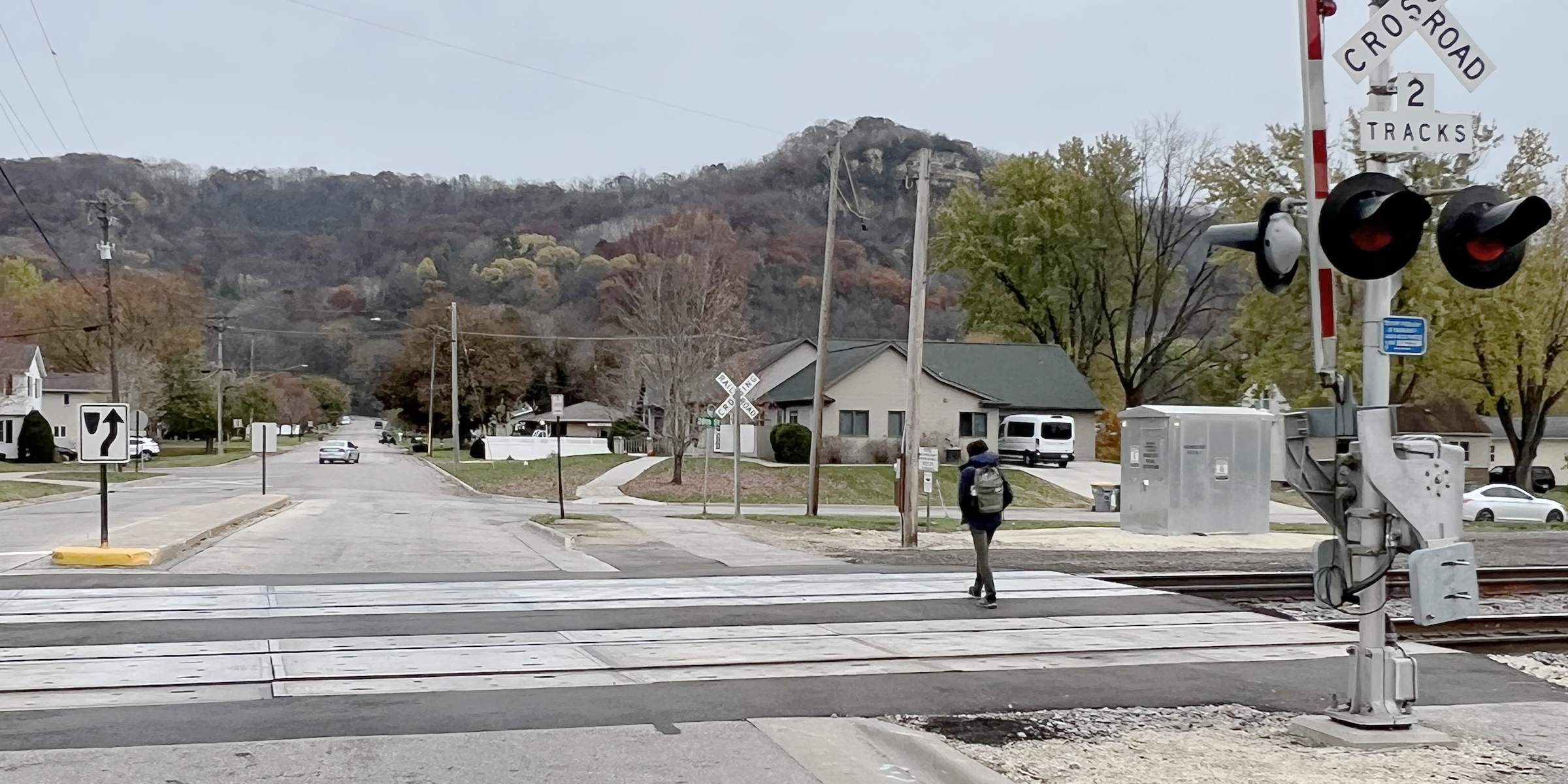A pedestrian walks across a railroad crossing in La Crosse, Wis., a community with several crossings that exhibit high risk for pedestrians and bicyclists, according to WisDOT’s upcoming Bicycle/Pedestrian Railroad Crossing Safety Action Plan.
When we talk about railroad and train safety, we often think of it in terms of the safety of the railroad infrastructure itself (e.g., derailments) or the relationship between trains and vehicle traffic (e.g., train vs. vehicle crashes). But what about the relationship between railroad crossing safety and pedestrian and bicycle traffic?
The Wisconsin Department of Transportation (WisDOT) wanted to know the answer to that question. So, they enlisted the help of SRF Consulting Group’s comprehensive team of planners and analysts to build upon a previous statewide at-grade railroad crossing safety study.

WisDOT Railroad Crossing Safety Background
In response to a series of acts enacted by US Congress and requirements set forth by the Federal Rail Administration (FRA) and the Federal Highway Administration (FHWA), WisDOT submitted the Wisconsin Highway-Railway Grade Crossing Safety Action Plan (SAP) in 2022. This initial rail study, also led by the SRF team, was highway-centric, meaning the focus of the plan was on at-grade crossings on state highways and only related to vehicle traffic.
The FRA encouraged states to expand that approach by also analyzing the role of non-motorized modes of travel in railroad crossing safety. With 3,300 miles of rail lines and nearly 5,900 at-grade crossings in Wisconsin, WisDOT has made this next iteration of the Safety Action Plan a priority, one of the first states to do so.
Innovative Strategy
Traditionally, railroad crossing studies have relied on historical crash data to predict future traffic patterns and incidents at railroad crossings. However, inconsistencies in frequency and lack of data related to near misses, does not always accurately reflect potential future events.
The SRF team developed an innovative, data-driven methodology for both WisDOT studies to examine at-grade crossings throughout the state, assess each location for risk, and document their findings. In addition to crash statistics and types of warning devices, other information, like train, vehicle, and pedestrian volume, proximity to schools and emergency services, and demographics, was collected.

Because data for non-motorized traffic is not as readily available as vehicular traffic, the project team collaborated with key stakeholders to evaluate and incorporate a variety of key crossing characteristics and measures to understand the physical condition and mobility implications at each crossing. As the study progressed and the process evolved, quantitative tools and qualitative feedback provided a more holistic perspective than just historical data alone.
“Public engagement was key to the success of this plan. It was important for us as a project team to make sure we were collecting as much pertinent information and data as possible.”
Justin Scott, AICP, SRF Project Manager
With a comprehensive approach to gathering information and an innovative modeling methodology, areas with high-risk crossings were easily identified and assessed for potential improvements. The final report is scheduled to be released in fall 2024 and will provide detail about the study process, findings, and potential improvements.
See Tracks? Think Train Week in La Crosse

On the heels of the Bicycle/Pedestrian Railroad Crossing Safety Action Plan, WisDOT joined the La Crosse Area Planning Committee and La Crosse County to highlight the importance of railroad crossing safety in the La Crosse community during Operation Lifesaver’s See Tracks? Think Train Week. With a complex rail network and a popular multi-use trail system in close proximity to the railroad tracks, La Crosse is a clear example of why a project focused on pedestrian and bicycle traffic was necessary. Through the course of the study, several crossings in the community were exhibiting high risk.
SRF Project Manager Justin Scott and WisDOT Project Manager Kris Sommers spent time in the La Crosse area, participating in an organized initiative that promoted railroad crossing safety awareness. Justin presented at a Law Enforcement Roundtable and joined others as they visited local schools and Boys & Girls Clubs throughout the area. It was the perfect opportunity to reiterate the importance of railroad crossing safety, while also highlighting real data and information gathered through the study.
How can SRF help?
SRF’s Planning Team has assisted clients in reaching their objectives on a wide range of railroad crossing safety and noise issues, including more than 60 quiet zone projects throughout the United States. We specialize in helping local and state governments gain public support and cooperation from railway companies, public utilities commissions, and other important stakeholders for various public safety and railroad mitigation improvements. Our strong relationships with numerous railroad companies have been built over many years of experience working with their staff members. We have also established strong relationships with regional and national FRA representatives and state DOT staff. Our intimate knowledge of railway planning and design standards and practices and our professional and creative approach to resolving local and regional rail issues has earned SRF an excellent national reputation.
Justin Scott, AICP

763.249.6764
Justin has 17 years of multimodal transportation planning and policy experience working with federal, state, and local agencies to deliver a variety of large and small projects. He serves as a project manager in SRF’s Minneapolis office and has experience leading regional and statewide freight plans, state rail plans and rail safety plans, and intermodal rail feasibility analysis studies.
Justin is also a quiet zone expert having assisted numerous communities successfully implement quiet zones across the nation. He has a deep understanding of federal grant programs and is experienced in fulfilling federal grant requirements and working to program grant applications for winning projects.

